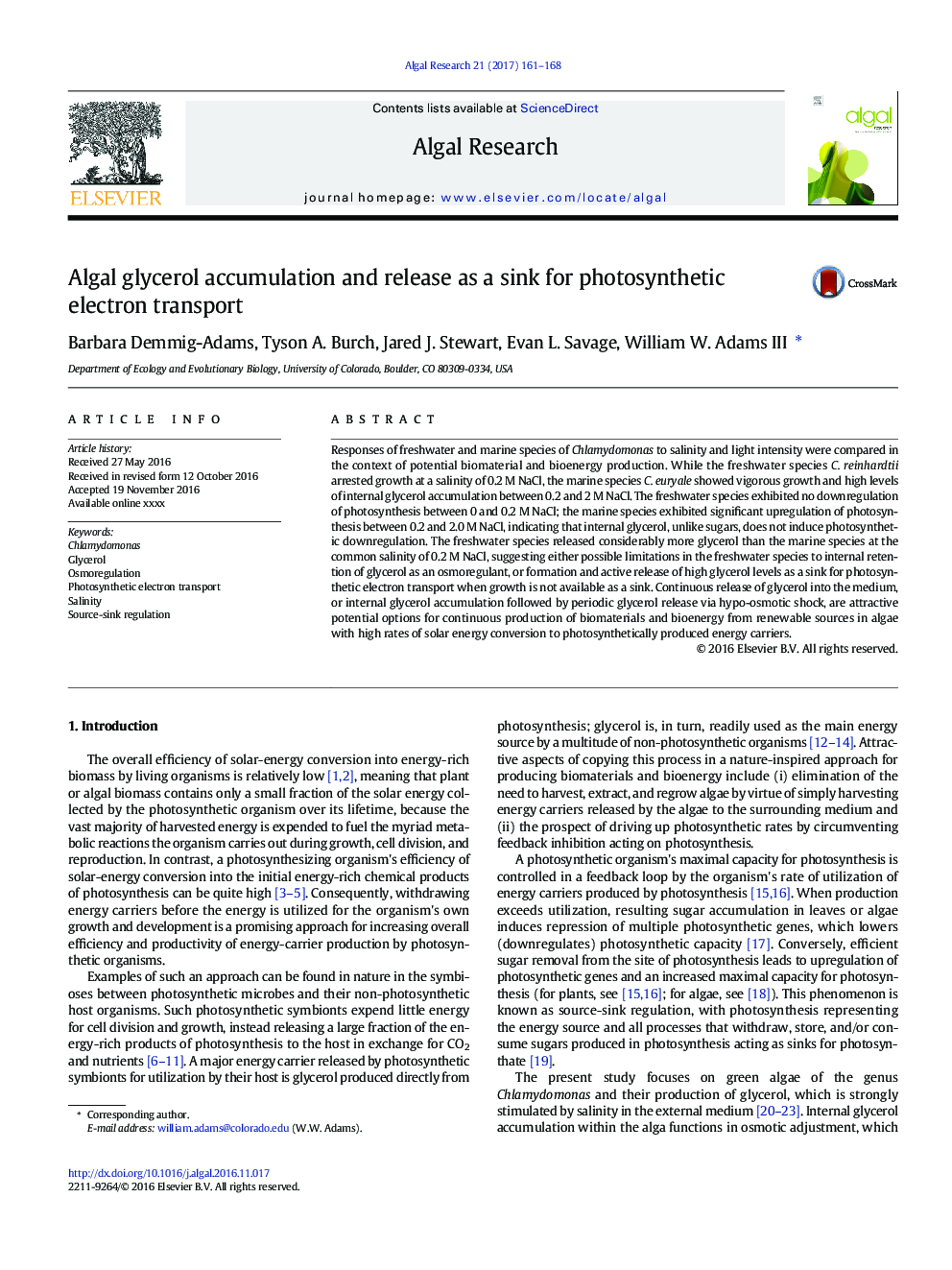| Article ID | Journal | Published Year | Pages | File Type |
|---|---|---|---|---|
| 5478510 | Algal Research | 2017 | 8 Pages |
Abstract
Responses of freshwater and marine species of Chlamydomonas to salinity and light intensity were compared in the context of potential biomaterial and bioenergy production. While the freshwater species C. reinhardtii arrested growth at a salinity of 0.2Â M NaCl, the marine species C. euryale showed vigorous growth and high levels of internal glycerol accumulation between 0.2 and 2Â M NaCl. The freshwater species exhibited no downregulation of photosynthesis between 0 and 0.2Â M NaCl; the marine species exhibited significant upregulation of photosynthesis between 0.2 and 2.0Â M NaCl, indicating that internal glycerol, unlike sugars, does not induce photosynthetic downregulation. The freshwater species released considerably more glycerol than the marine species at the common salinity of 0.2Â M NaCl, suggesting either possible limitations in the freshwater species to internal retention of glycerol as an osmoregulant, or formation and active release of high glycerol levels as a sink for photosynthetic electron transport when growth is not available as a sink. Continuous release of glycerol into the medium, or internal glycerol accumulation followed by periodic glycerol release via hypo-osmotic shock, are attractive potential options for continuous production of biomaterials and bioenergy from renewable sources in algae with high rates of solar energy conversion to photosynthetically produced energy carriers.
Related Topics
Physical Sciences and Engineering
Energy
Renewable Energy, Sustainability and the Environment
Authors
Barbara Demmig-Adams, Tyson A. Burch, Jared J. Stewart, Evan L. Savage, William W. III,
